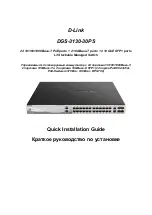
Configuring OSPF
Configuring OSPF
page 1-30
OmniSwitch AOS Release 7 Advanced Routing Configuration Guide
March 2011
Configuring Static Neighbors
It is possible to configure neighbors statically on Non Broadcast Multi Access (NBMA), point-to-point,
and point-to-multipoint networks.
NBMA requires all routers attached to the network to communicate directly (unicast), and every attached
router in this network becomes aware of all of its neighbors through configuration. It also requires a
Designated Router (DR) “eligibility” flag to be set for every neighbor.
To set up a router to use NBMA routing, follow the following steps:
1
Create an OSPF interface using the CLI command
ip ospf interface
and perform all the normal config-
uration for the interface as with broadcast networks (attaching it to an area, enabling the status, etc.).
2
The OSPF interface type for this interface should be set to non-broadcast using the CLI
ip ospf interface type
command. For example, to set interface vlan-213 to be an NBMA interface, enter
the following:
-> ip ospf interface vlan-213 type non-broadcast
3
Configure static neighbors for every OSPF router in the network using the
ip ospf neighbor
command.
For example, to create an OSPF neighbor with an IP address of 1.1.1.8 to be a static neighbor, enter the
following:
-> ip ospf neighbor 1.1.1.8 eligible
The neighbor attaches itself to the right interface by matching the network address of the neighbor and the
interface. If the interface has not yet been created, the neighbor gets attached to the interface as and when
the interface comes up.
If this neighbor is not required to participate in DR election, configure it as ineligible. The eligibility can
be changed at any time as long as the interface it is attached to is in the disabled state.
















































